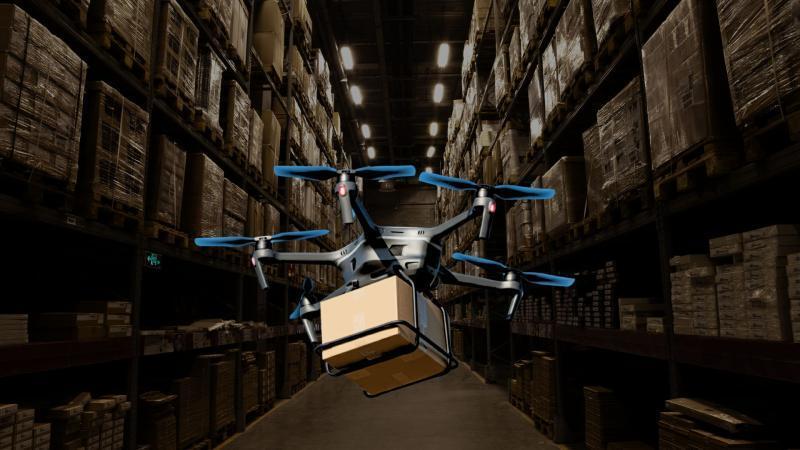
New Tech Optimises Drone Fleets for Faster, Greener Deliveries
Imagine receiving your packages in a flash, with a smaller carbon footprint to boot. The future of logistics has just gotten a significant boost, as researchers have developed an innovative algorithm to optimize drone delivery schedules. This breakthrough tackles the “Drone Warehouse Problem,” a long-standing challenge in the industry, enabling warehouses to manage varied drone fleets efficiently. The result? Faster, greener, and more sustainable last-mile delivery solutions for all.
The Drone Warehouse Problem: A Key Bottleneck
As the world shifts towards drone-based logistics, a crucial challenge has emerged: managing drone fleets efficiently. The Drone Warehouse Problem refers to the difficulty of coordinating multiple drones, each with its own unique characteristics, to deliver packages in the most optimal way. This includes factors such as drone capacity, speed, and battery life, as well as weather conditions and traffic patterns.
Without a solution to this problem, drone fleets face significant inefficiencies, leading to increased costs, longer delivery times, and a larger environmental impact. For instance, drones may be forced to take unnecessary detours or wait in queues, resulting in wasted fuel and increased emissions.
Introducing the Novel Algorithm
Researchers at [Institution/University] have developed a novel algorithm to tackle the Drone Warehouse Problem. This innovative solution uses machine learning and optimization techniques to optimize drone delivery schedules in real-time. By analyzing various factors, including drone specifications, weather conditions, and traffic patterns, the algorithm creates a customized delivery plan for each drone.
The algorithm’s key features include:
- Drone Fleet Optimization: The algorithm assigns tasks to each drone based on its unique characteristics, ensuring that each drone is utilized efficiently.
- Real-time Replanning: The algorithm continuously monitors weather conditions, traffic patterns, and other factors, adjusting the delivery plan as needed to minimize disruptions.
- Collaborative Planning: The algorithm enables coordination between multiple drones, ensuring that each drone is aware of the others’ schedules and routes.
Benefits of the Novel Algorithm
The implications of this breakthrough algorithm are far-reaching, offering numerous benefits for the logistics industry:
- Faster Deliveries: With optimized drone delivery schedules, packages can reach their destinations faster, reducing wait times and increasing customer satisfaction.
- Reduced Emissions: By minimizing unnecessary flights and detours, the algorithm reduces the environmental impact of drone deliveries, making them a more sustainable option.
- Increased Efficiency: The algorithm enables warehouses to manage varied drone fleets more effectively, reducing costs and increasing productivity.
- Improved Scalability: The algorithm’s ability to adapt to changing conditions makes it an ideal solution for large-scale drone fleets, paving the way for widespread adoption.
A Step Towards Sustainable Logistics
The innovative algorithm developed by researchers is a significant step towards creating a more sustainable and efficient logistics system. As the demand for faster and more environmentally friendly delivery options continues to grow, this technology has the potential to revolutionize the way packages are delivered.
With the Drone Warehouse Problem solved, the logistics industry can focus on scaling up drone-based delivery solutions, providing customers with faster and greener options. As the world moves towards a more sustainable future, this breakthrough algorithm is poised to play a critical role in shaping the future of logistics.
Source:
https://researchmatters.in/news/novel-algorithm-tackles-drone-warehouse-problem-faster-deliveries






